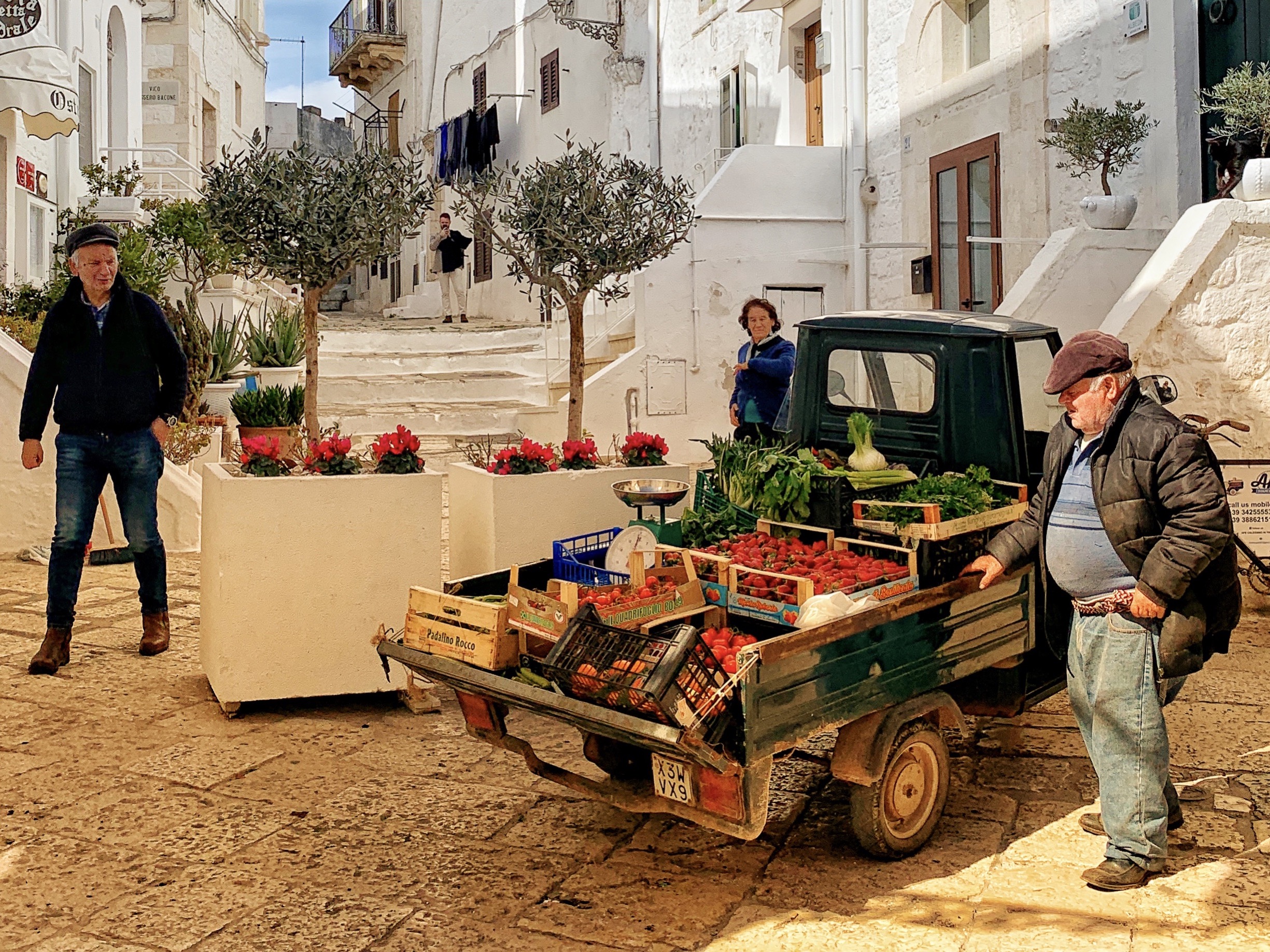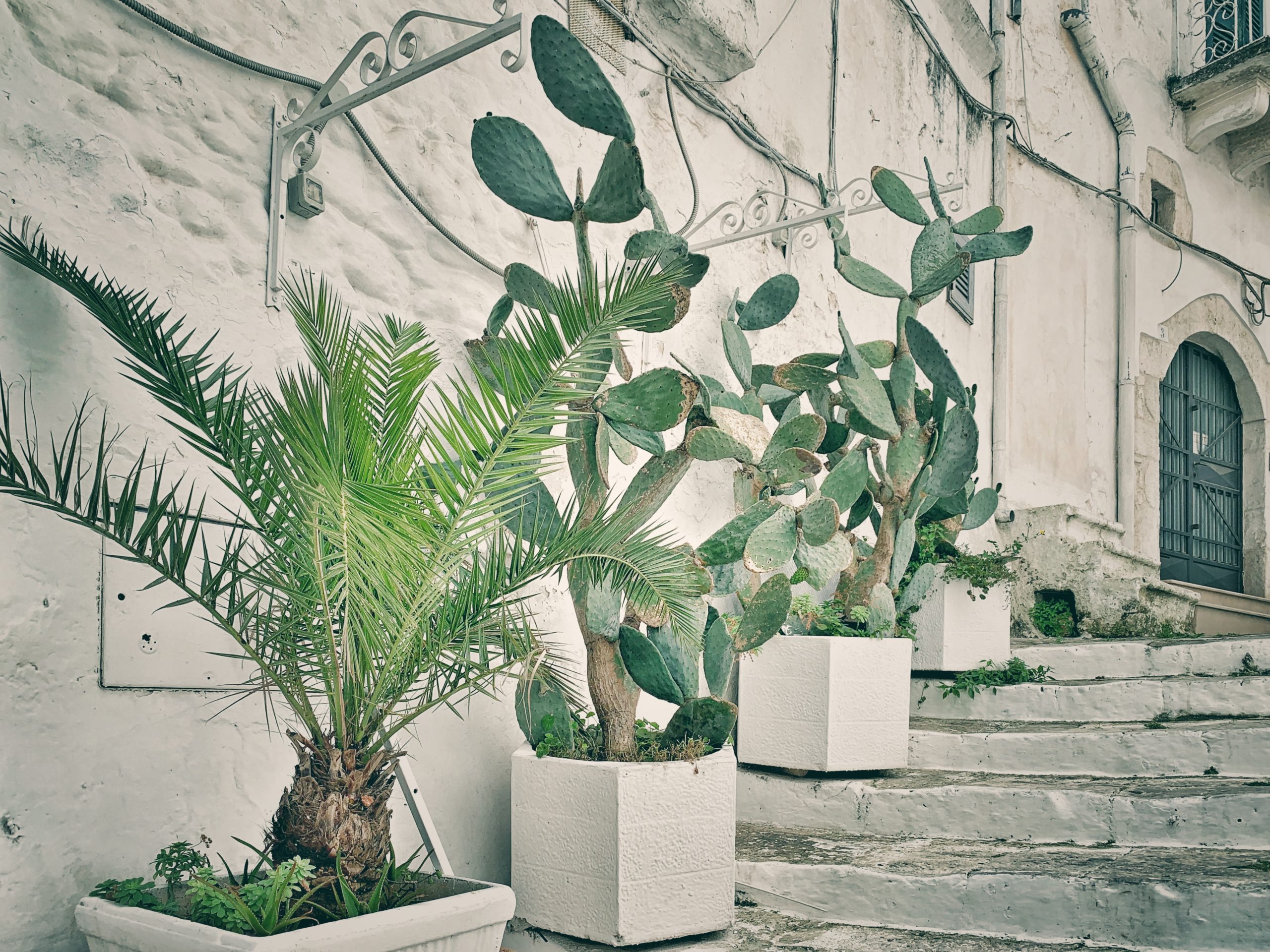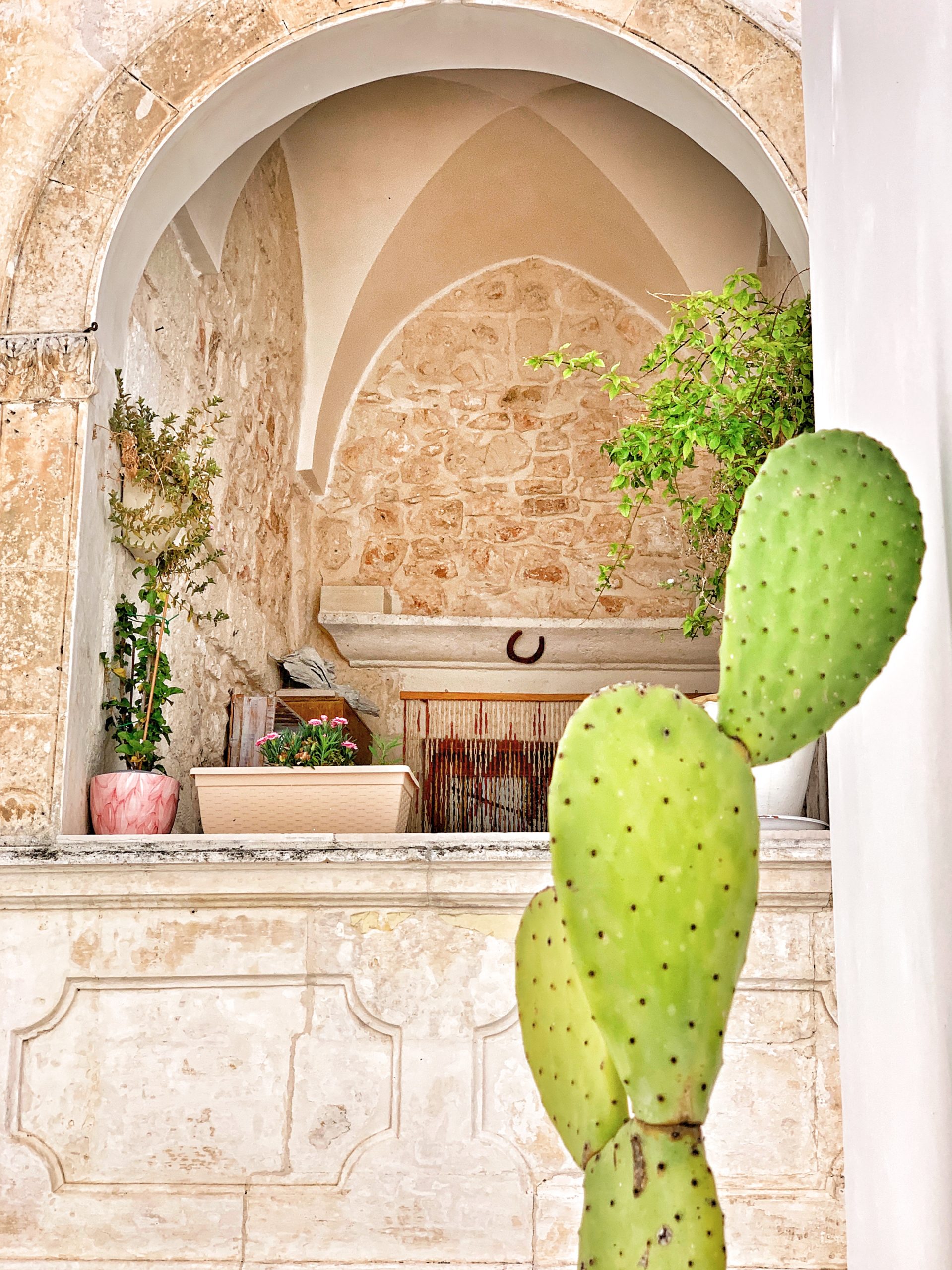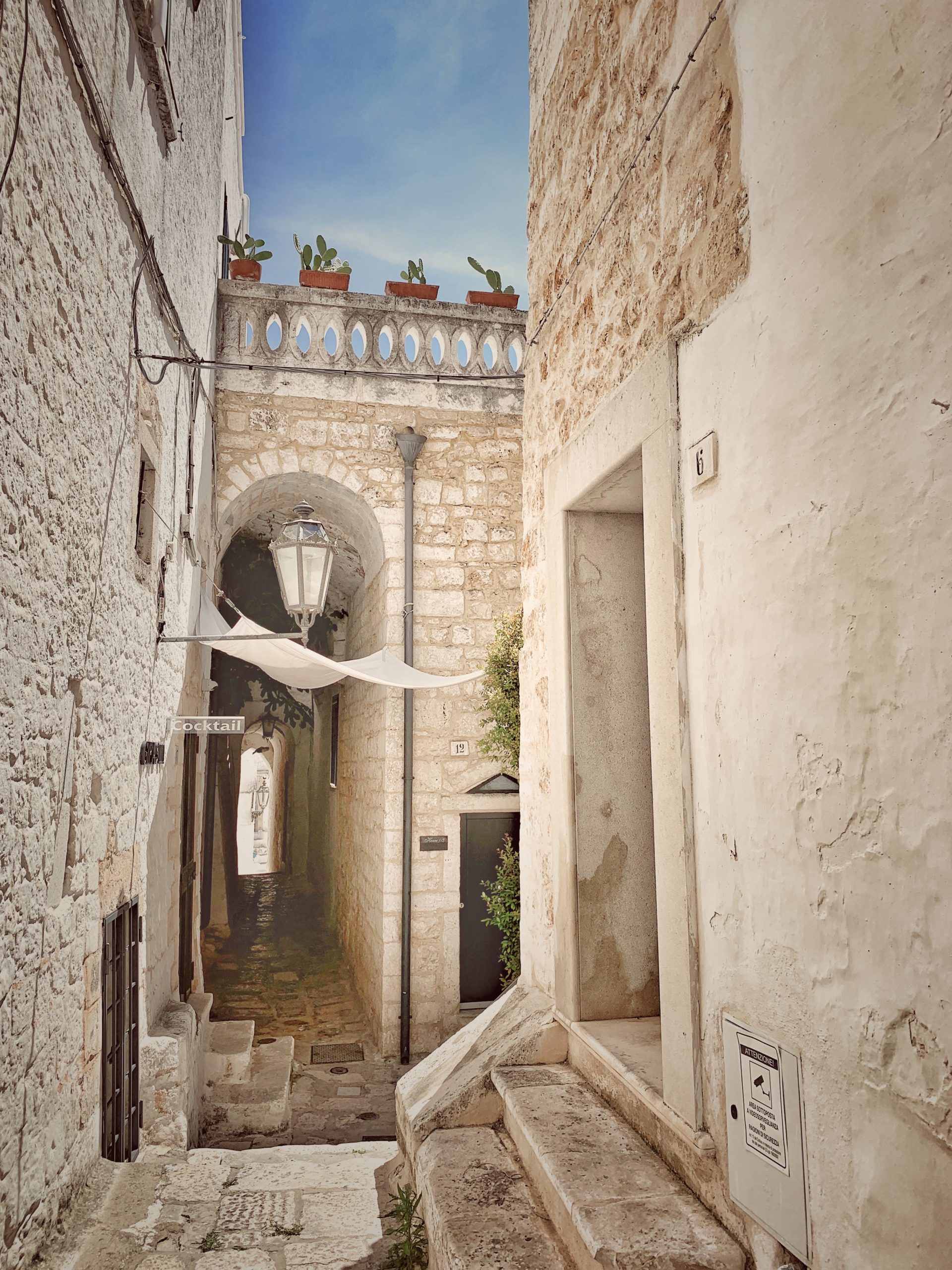WE (L) COME BACK TO OSTUNI
Ostuni's most distinguishing characteristic is its uniformly white buildings. The practice of lime-washing the town’s houses is still carried out annually.

Where to park in Ostuni
Finding a parking spot wherever you are in Puglia can be challenging. Our hacks on where to park in Ostuni.

Food and drink
In Puglia good food is always around the corner, although we do have a few favourite spots in Ostuni.

Nearby ...
A 15 - 20 minute drive from the centre of town will take you to some of Ostuni’s most popular beaches.
La città bianca... Puglia's White City
The Ostuni Podcast and the Big Guide to Ostuni
Listen to our podcast guide with our guest @daviditalia92 here.
The Big Gay Podcast from Puglia is available on Spotify and iTunes or from your usual podcast provider.

One of Puglia’s better known destinations, Ostuni’s nooks and crannies are worth taking two or three days to explore, at a gentle pace. It has a vibrant centro storico in summer, with restaurants and bars tucked away in every alleyway twisting around and up and down the hilltop upon which the duomo sits.
It is also the perfect home base for venturing into the Valle d’Itria and beyond.
Ostuni is 40 km (about 25 miles, less than a 30 minute drive) north from Brindisi’s Salento airport and around 100 km (62 miles, a little over an hour’s drive) from Bari airport.
BGP Hack | The best views driving into Ostuni are from the E55 (SS379) Adriatic coastal highway along the SP19 (take the exit at Pilone coming down from the north/Bari) or from the SP21 (take the Torre Pozzella exit coming up from the south - Lecce/Brindisi) turning off at the Contrada Rosaria fork as you climb to approach Ostuni.
The latter route will also take you to the municipal pay and display car park we often use (see Parking).


The basics
Ostuni rises up from the Valle d’Itria, crowning the hill it sits on. The white walls and buildings of the old town gleam in the distance and can be seen as you drive along the main coastal highway.
Lime washing the town’s houses - a practice believed to have originated as a defence against the plague in the 17th century - is still carried out annually, lightening up the centro storico’s maze of dark medieval streets and alleys that wind and creep around.

Off-season Ostuni - from mid/end of October to Easter - is extremely quiet. Many bars and restaurants in and around the old town stay closed. During the daytime especially options for eating out will be very limited. We estimate that two-thirds of Ostuni’s bars and restaurants in and around the old town remain closed off-season.
Spring revives the city. Ostuni wakes up after Easter and is in its prime all summer long, white and golden on each and every hot, hot day.
The population swells from about 32,000 to over 100,000.



Parking
Like most Italian towns and cities, car parking in Ostuni can be a challenge.
Try parking in the municipal pay and display car park opposite the Confraternita del Carmine church between Via Salvatore Tommasi and Via Giosuè Pinto.


A 2-minute walk, ending with the up the steps to Sant’Oronzo’s column will take you to the heart of Ostuni; the Piazza della Libertà and up to the Duomo.
This car park fills up pretty quickly in summer. Our fall back is parking around the Parco Rimembranze.
Cost | cars - €0.52 per hour | €1.20 per hour between 15 June/September from 21:00 - 02:00 | caravans €90 per hour
BGP Hack | the pay and display machines at both these parking spots require you to input your vehicle registration (license plate). If you have a hire car keep a photo of this to say you having to go back and re-join the line to pay for your ticket.


The walk down towards the old town is pleasant, passing by Ceramiche Puglia.
The shop is worth stepping into if only to view the two sections of the floor that are cut away. One reveals to the olive oil drain, the other further into the shop the cave section in the rock below.
Most of Puglia’s ceramics come from Grottaglie, near Taranto. The ceramic quarter is a must see. If you are going to Grottaglie, save your money until then. If not, then spend away in Ostuni.
To see
Cross the Piazza della Libertà (main town square), with the baroque obelisk of Sant’ Oronzo (la colonna), the patron Saint of Ostuni; stop for a spritz at Caffè Garibaldi on the piazza before taking the Via Cattedrale up into the old town to the duomo, Ostuni's cathedral with its symmetrical tripartite facade, and rose windows.
We wouldn't stop to buy olive oil or wine on the Via Cattedrale - it's overpriced of course.
Continue up to the duomo, where you will also find the Arco Scoppa, the ornate pedestrian bridge between the buildings, originally in wood.
Enjoy an ice-cream from the gelateria a little beyond the arch, before turning the corner to enjoy the panoramic view from the east, out to sea, taking in the acres and acres of silver green olive groves (try to blank out the ugly industrial buildings spoiling the view, beyond which is the train station).

Don't forget to take a selfie at La Porta. These days it seems to be a more popular selfie stop than the adjacent view of the olive groves.
Go down the steps, keeping right, and up some more, to find your way around the edge of the old town and back to the via Cattedrale. Alternatively keeping left will take you around the outer wall.



Where to eat
You check your Instagram. Everyone is having the perfect meal, in a perfect restaurant on their perfect holiday... You deserve it too. But trying to accommodate your companions’ dietary preferences, avoiding tourist traps and the pressure of finding foodie perfection weigh too heavily. You turn to Tripadvisor, are encouraged by a few good reviews.
Then Pamela from Aberdeen writes that although the food was excellent and the staff attentive and friendly, once the restaurant filled up, they had to wait a little too long for their bill to come.... and you are dithering again!
Here’s the thing. Take a chance. On the whole, when it comes to Italian cuisine, there is no such thing as bad food served here in Puglia (just unsuitable choices).
Don’t obsess trying to find that cool restaurant that’s off the radar, but sufficiently on trend. Don’t spend hours marching around town to find the highly recommended Neapolitan pizza joint that closed in 2017. Be spontaneous, be courageous.
The choice of dining experiences in Ostuni during the summer season seems endless - especially on via Cattedrale and the alleyways that shoot out from it on the way up to the duomo - and will suit all budgets.
BGP Hack | Lunch | the afternoon siesta variously referred to as la pausa, la controra, il riposino starts from around 1pm | Many restaurants will continue lunch service until around 2.30pm | Be prompt - try to sit down before 2pm if you want to be sure of having lunch.
BGP Hack | Dinner |The only people eating in restaurants at 8pm are British tourists | At 8.30pm the German and Scandinavian tourists join them | Italians enjoy the occasion of dining out | They are not in a rush, neither to eat, nor to finish and leave | If the service gets slower after the food has arrived, that’s normal.
In the spirit of being good hosts:
Old town | Osteria Monacelle | €€-€€€ | Casa San Giacomo | €€-€€€
Elsewhere | Pescheria Il Delfino flipper | €€ | Dish Restaurant | €€-€€€
Drinks | Pausa Cafè |€€ | Monna Lisa Caffè | €€
A brief history ...
Founded by an indigenous tribe some 600 years BC, Ostuni's long and varied history has seen it pass from dynasty to dynasty and from empire to empire.
Traces of its rich heritage remain with hints of the Middle Ages around every corner of its labyrinth of narrow cobble streets but What most visitors see today dates from between the 1400s and the 1700s.
Beyond Ostuni
Ostuni is the perfect home base for venturing into the Valle d’Itria and beyond.
Locorotondo, officially one of the most beautiful villages in Italy, the slightly underwhelming Alberobello and the breathtaking Polignano a Mare with iconic views from the Balconata sul Mare are all within easy reach by car.
A 13 km drive will take you to the acknowledged foodie paradise of Ceglie Messapica while 15 km to the west is Cisternino famous for its bombette pugliesi - street food made and cooked by the butcher, served at tables outside their shops.
Carovigno - little more than a 10 minute drive south of Ostuni - has a small but perfectly formed old town that punches above its weight with some stunning restaurants, including one with a Michelin star. Much quieter and less well known than Ostuni - as reflected in the pricing of holiday accommodation found there.
Lecce’s old town is under an hour away (78 km - park for free directly outside the old town). Even a a day trip to Santa Maria di Leuca, at the very tip of the heel of Italy’s boot, is possible (a 1h45m drive via Gallipoli - and well worth it).
Keep it gay
Beaches | Torre Pozzelle and Lamaforca - Ostuni’s gay cruising beaches

